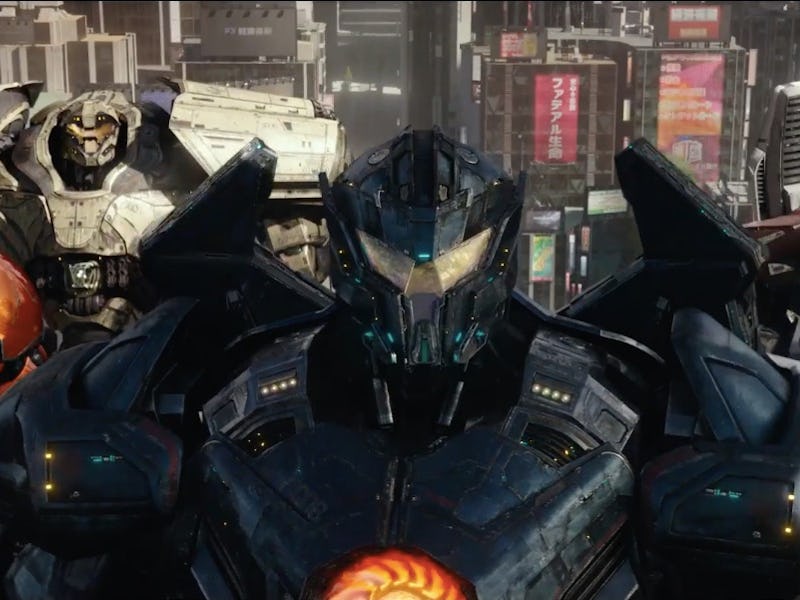'Pacific Rim Uprising' Actually Fixes One Problem From the Original
That is, assuming you thought it was a problem to begin with.

Pacific Rim Uprising is not, it probably won’t shock you to learn, one of the rare sequels that improves upon the first movie. Uprising actually casts away most of the emotional depth and character relationships which made the first movie something more than just a few giant CGI action figures smashing into one another. But, although the heart is gone, the action is still there, and it’s arguably even better than in the original, because you can see what’s happening.
“Arguably” is a key word here, because the problem with the fight scenes in the first movie might be a feature, not a bug, depending on what you’re looking for. In Guillermo del Toro’s 2013 movie, all of the epic battles between Kaiju and Jaegers take place at night, in rainy conditions, or underwater. Uprising’s climactic showdown, where four Jaegers take on three huge Kaiju, takes place in broad daylight.
As John Knoll, the FX supervisor on the original Pacific Rim, explained to io9 five years ago, the first movie didn’t feature any “impossible camera angles” or unexplained light sources. During the neon-lit battle in Hong Kong, for instance, the Jaegers are illuminated by lights from the buildings, the Kaiju’s blue glow, or even their own floodlights. They’re often dark and obscured by shadow because, in real life, that’s what they’d look like.
Lighting in the first 'Pacific Rim.'
The camera angles were also meant to be realistic. The isn’t a mysterious floating viewpoint whipping around through a totally CGI space. Instead, the team tried to frame each shot from an actual vantage point. “In theory, this one is shot from a boat, this is a helicopter shot, [and] this is a guy on the street, so it should have a little bit of a handheld thing,” Knoll said.
In addition to the dim lighting, the battles in the first movie were slow, as to show a sense of scale and reflect just how massive the Kaiju and Jaegers were. The way these fights were animated shows impressive attention to detail and a desire to make these giant battles feel real. Of course, we’re talking about impossibly huge monsters fighting stupidly big robots, so there’s a chance realism isn’t what you’re watching Pacific Rim for. If that’s the case, maybe you found it annoying that you couldn’t really see what was happening in these supposedly awesome fights.
Uprising “fixes” this. The Jaegers and Kaiju are almost fully illuminated in most scenes, light source be damned, so it’s easy to follow the action. The non-existent camera follows the action to, as it swirls around monster and machine in ways that no real camera would ever be able to do. And, the Jaegers are moving so fast that they don’t feel as big as they ought to.
The upside to this is that the fight scenes are exciting, if much less stylized. Saber Athena, an especially fast and acrobatic orange Jaeger, gets some exciting moves in, as it hacks into a giant Kaiju with a sword-wielding front flip.
The fight scenes in Uprising don’t feel like duels between giants that are too big to fully capture or be properly lit. They feel like pretty average-sized fights, but the choreography is thrilling and you can see what’s happening, for better or worse.
Pacific Rim Uprising opens on March 23.
SEE ALSO: Review: Pacific Rim Uprising Doesn’t Lack Heart, It’s Actively Heartless